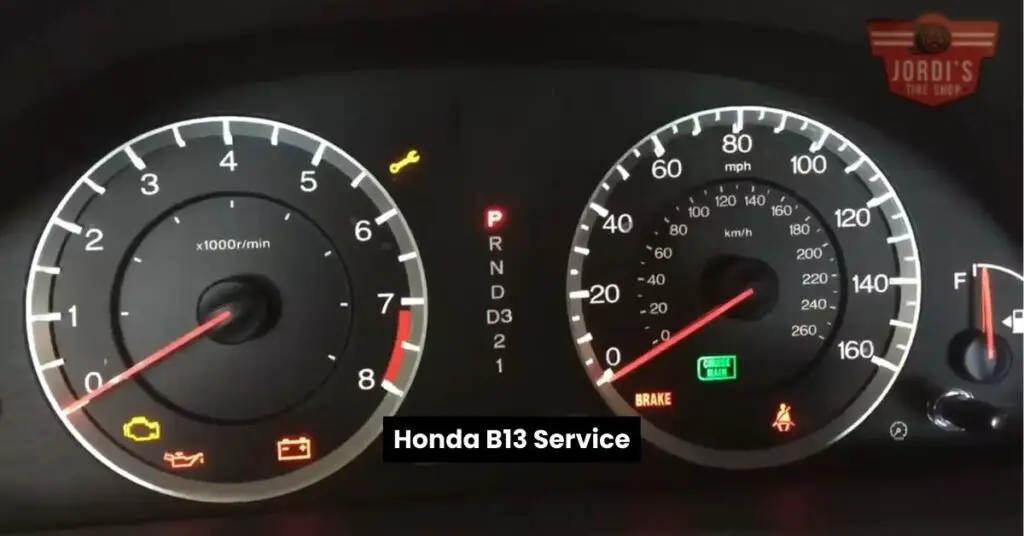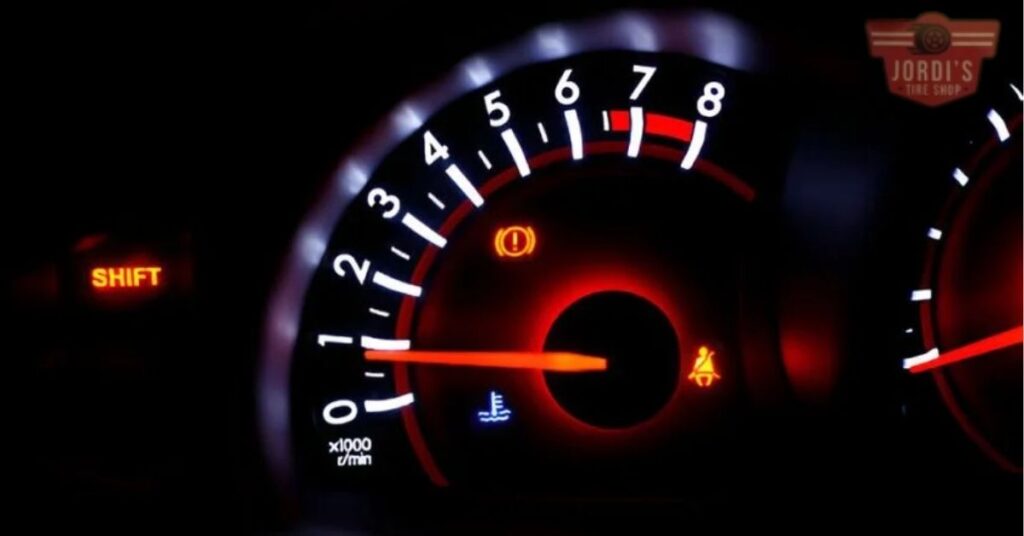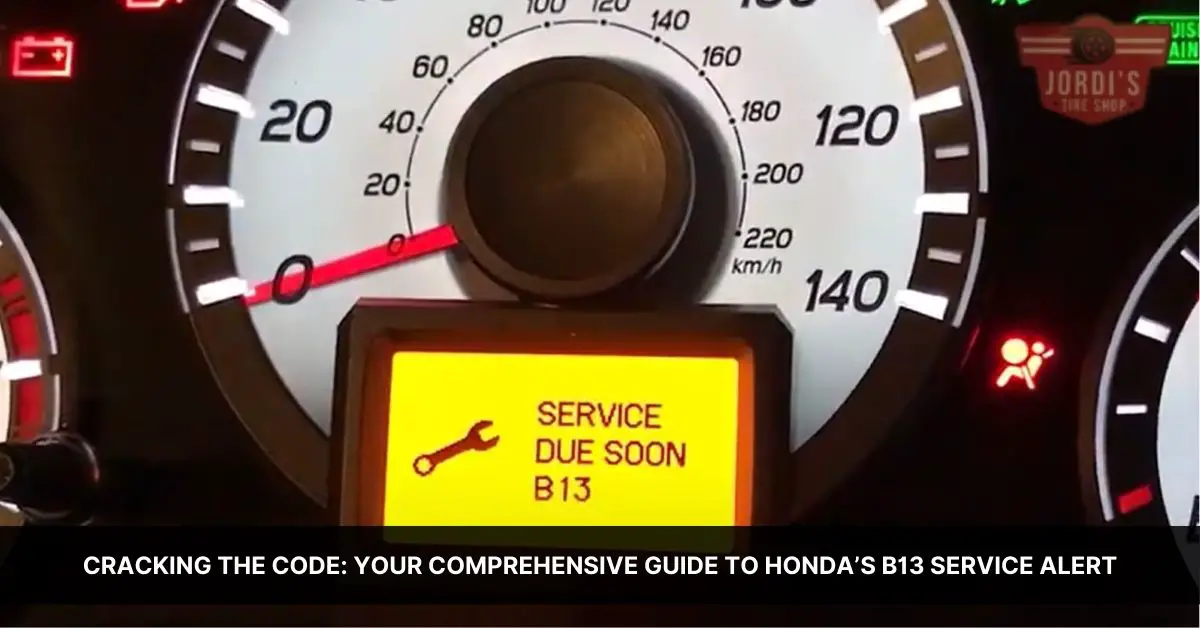Ever found yourself puzzled by the mysterious Honda B13 service code blinking on your car’s dashboard? You’re not alone. This cryptic message often leaves many car owners scratching their heads.
Understanding Honda B13 Service Code

Deep comprehension of the Honda B13 service code alleviates vehicular vexation. Unpack specifics of this enigmatic code and get acquainted with its paramount significance for vehicle operation in the ensuing sections.
B13 Service Code Basics
Honda B13 service code comprises three components. ‘B’ denotes an oil and filter change, ‘1’ suggests a tire rotation, and ‘3’ implies a replacement of the transmission fluid. Two codes demand attention: ‘B’ flags substantial service, requiring substantial attention, while ‘1’ and ‘3’ are supplemental services, ensuring all vehicular parts function seamlessly.
Why These Codes are Important
Codes hold immense importance; encapsulating vital vehicle maintenance annotation. Understandably, they constitute vehicle diligence, performing the role of a silent sentinel of vehicle health. Honda assigns codes such as B13 to streamline routine upkeep, ensuring an optimally functioning vehicle. Not dismissing or delaying B13 service code alerts guarantees your Honda remains in prime condition, thereby fostering a secure and efficient ride.
Breaking Down the Honda B13 Service Code
Exploring further, each component of the Honda B13 service code holds a distinct meaning that guides you toward the required vehicle maintenance tasks. Let’s consider each part separately for a detailed understanding.
Understanding the ‘B’ in B13
The ‘B’ in B13 stands for an oil and filter change, a critical task that ensures your Honda engine functions efficiently. This isn’t a task to brush aside. The longevity and performance of your car heavily depend on it. Strive for scheduled maintenance oil changes, usually after every 3,000 to 5,000 miles. This helps to keep the engine lubricated, reducing friction and avoiding potential damage.
Decoding the ‘1’ in the B13 Service Code
Moving on to the ‘1’, it denotes the need for a tire rotation. Regular tire rotations extend tire life, providing a smoother and safer ride. The ‘1’ doesn’t imply urgency; but, it does serve as a reminder to upkeep your vehicle. A good rule of thumb is to consider tire rotation every six months or 6,000 to 8,000 miles, balancing wear across all four tires.
Unpacking the ‘3’ in Honda’s B13 Service Code
Finally, the ‘3’ is certainly not to be ignored. This represents a call for a transmission fluid change. As the transmission ensures power transfers from the engine to the wheels, its health is paramount. Fresh transmission fluid maintains the operation at peak, preventing overheating and excessive wear. As a guide, consider a transmission fluid change around every 30,000 to 60,000 miles. But, factors like driving conditions and vehicle usage can alter this interval.
By understanding each component of the B13 service code, you’re embracing the steps needed to uphold your Honda’s performance, longevity, and safety. It’s a roadmap to practicing proactive car care, fostering a trusted relationship with your vehicle.
How Honda B13 Service Code Affects Your Vehicle

To appreciate the B13 service code’s relevance, let’s evaluate its impact on your Honda’s performance and potential problems that may arise if ignored.
Changes in Performance
Observing the B13 service code and following through with the consequential maintenance activities leads to enhanced vehicle performance. A timely oil and filter change, denoted by ‘B’, ensures improved engine efficiency, serving as a base for your car’s overall functioning. This not only aids smoother driving but also helps in curbing fuel consumption.
Adhering to an advised tire rotation, indicated by ‘1’, promotes even tire wear and typically presents you with a smoother ride. A well-maintained tire rotation schedule can also improve your car’s handling and stabilize your driving dynamics.
The ‘3’ in B13 calling for a transmission fluid change significantly impacts the vehicle’s gear shifting. It facilitates smoother transitions, giving you an effortless driving experience. Neglecting this crucial task can cause severe problems, potentially leading to more expensive vehicle maintenance.
Possible Problems Associated with B13 Service Code
Ignoring the B13 service code may lead to multiple issues with your vehicle. Delayed oil and filter changes may cause engine parts to wear out prematurely, reducing the engine’s lifespan. This, in turn, can lead to lower fuel efficiency and a gradual decrease in car performance.
Skipping tire rotations might result in uneven tire wear, leading to rough rides and impaired driving control. Imbalanced tires can also put undue stress on the vehicle, shortening the lifespan of your tires and potentially forcing you to replace them prematurely.
Finally, neglecting the recommended transmission fluid changes can result in grimy, less effective transmission fluid. This lack of maintenance hinders smooth gear shifting and can cause transmission overheating, a potentially expensive problem to fix.
Dealing with a Honda B13 Service Code

The crux of this write-up delves into the different scenarios related to dealing with a Honda B13 service code.
When to Seek Professional Help
Knowing when to seek professional help can be a game-changer in preserving the longevity of your vehicle. Primarily, if the B13 service code appears and you’re unfamiliar with car maintenance practices, consider enlisting the help of certified technicians. They possess the qualification and experience to gather clues from the vehicle’s behavior and interpret them correctly. Also, if you’re experiencing noticeable performance issues such as engine sounds, poor acceleration, or erratic shifting even though regular self-maintenance, it’s high time to schedule a visit to a reputable service center. Similarly, if the last service was performed too long ago considering the recommended mileage or time intervals, it’s advisable to seek professional assistance.
Essential Tips for Addressing a B13 Service Code
Successfully addressing a B13 service code means you’re extending the life of your Honda while assuring optimal performance. Start by prioritizing the oil and filter change, denoted by the ‘B’ in the code, to ensure your engine continues running smoothly. Secondly, remember to rotate your tires, indicated by the number ‘1’, facilitating balanced wear and increased fuel efficiency.
Finally, the ‘3’ demands attention to your vehicle’s transmission fluid. Maintain regular intervals of changing the fluid, crucial in preserving the health and efficiency of your vehicle’s transmission system. Finally, it can’t be stressed enough: do not ignore a B13 service code. Recognize it as a call to action that assists in keeping your Honda functioning at its peak while avoiding costly future repairs.
Maintaining Your Honda After a B13 Service Code

Keeping your Honda in optimal condition post B13 service code involves consistent inspections and employing authentic parts when necessary. Few factors play a crucial role in grasping this maintenance routine.
Regular Inspections and Maintenance
You cannot overlook the importance of keeping your Honda regularly inspected and maintained post B13 service code. This ongoing assessment allows you to spot potential issues before they morph into pricier problems. Scheduled assessments ensure your vehicle stays at its peak performance level—promoting longer lifespan, reduced fuel consumption, and an all-round smoother ride.
Indeed, it’s recommended to follow a exact maintenance timeline. Accordance with this is paramount for seamless operation. An oil and filter change is advocated every 3,000 to 5,000 miles, adhering to the ‘B’ service code. As in ‘1’ of the B13 code, rotating your tires every 6,000 to 8,000 miles or six months is advised. Finally, the code ‘3’ stresses the need for a transmission fluid change, typically every 30,000 to 60,000 miles contingent on driving conditions.
Using Authentic Honda Parts for Repairs
Whenever repairs or replacements become inevitable, using authentic Honda parts can retain the overall performance and longevity of your vehicle. Genuine parts are specifically designed and tested rigorously to meet Honda’s performance standards. Made-to-fit components ensure that everything works in harmony—contributing to the overall smooth ride and longer lifespan of the vehicle.
Also, authentic parts come with the guarantee of quality, security, and compatibility. While off-brand or used parts might seem like a cost-effective solution initially, they likely won’t provide the same reliability or longevity. These could end up causing more harm than good, leading to premature wear and tear, malfunction, and in a worst-case scenario, complete breakdowns. But, original Honda parts preserve your vehicle’s value and grant you peace of mind, knowing your Honda is equipped to deliver the performance it was designed for.
Conclusion
So there you have it. Your Honda’s B13 service code isn’t a mystery anymore. It’s a clear guide to keeping your vehicle in top shape. Remember, ‘B’ is for an oil and filter change, ‘1’ is a reminder to rotate your tires, and ‘3’ signals a need for transmission fluid change. These aren’t just random numbers and letters. They’re your car’s way of communicating vital maintenance needs.
By staying on top of these service tasks, you’re not only ensuring a smoother drive but also prolonging your Honda’s life. And if you’re unsure about anything, don’t hesitate to consult a certified technician. They’re there to help you understand and address these codes.
Finally, don’t underestimate the importance of using genuine Honda parts for repairs. They’re designed to maintain your car’s performance and reliability. So, heed your B13 service code. It’s your key to a well-maintained, efficient, and safe Honda.
What is the Honda B13 service code?
The Honda B13 service code is an important alert indicating needed vehicle maintenance. ‘B’ means an oil and filter change is due, ‘1’ signifies that tires need rotating, and ‘3’ shows that it’s time for a transmission fluid replacement.
How often should the Honda B13 service code procedures be performed?
Typically, an oil and filter change (‘B’) is needed every 3,000 to 5,000 miles. Tire rotation (‘1’) should occur every six months or between 6,000 and 8,000 miles, while a transmission fluid change (‘3’) is usually required every 30,000 to 60,000 miles.
How does the B13 service code affect vehicle performance?
Prompt attention to the B13 service code leads to better vehicle performance, smoother driving, and lower fuel consumption. Ignoring these services could cause engine damage, uneven tire wear, and transmission issues, leading to expensive repairs.
What should you do when you see the B13 service code?
When the B13 service code appears, prioritize an oil and filter change, tire rotation, and schedule a transmission fluid change. If unsure about maintenance procedures or if you notice a significant change in vehicle performance, consult qualified technicians.
Why is it important to maintain a Honda after a B13 service code?
Regular vehicle inspections and maintenance procedures are essential to pinpointing potential issues early, ensuring optimal vehicle performance, and extending the vehicle’s lifespan. Using authentic Honda parts for repairs is crucial, as they meet performance requirements and ensure vehicle compatibility.
Related Posts:
- Why Won’t My Car Shift into Overdrive? Exploring Common Causes and Solutions
- Can You Rent a Car with a Learner’s Permit? Unraveling Rental Company Policies for Novice Drivers
- Demystifying Transmitter Pockets: The Unsung Heroes of Wireless Communication
- Cracking the Code: Your Comprehensive Guide to Honda’s B13 Service Alert
- Unleashing Power: Exploring Cars with the Iconic LS3 Engine

